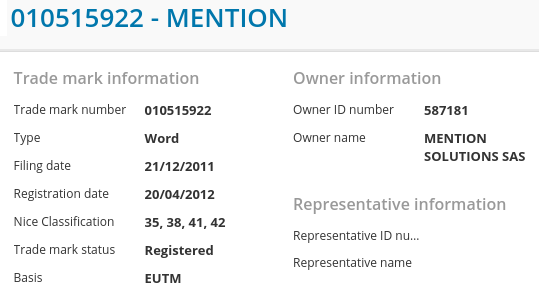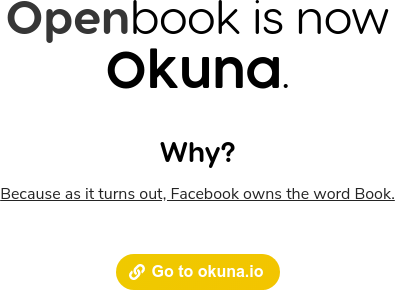You Should Obsess Over Your Product's Name
A piece of recurring advice in startup circles goes something like this:
do not obsess during the naming process. Instead, expeditiously pick a reasonable moniker and then get back to work delivering value to your customers.
In this article I’ll show you what the catch is.
The Short Story of MentionMe
May 28, 2019. My new project. My first commit. An app that notifies you when your keywords get mentioned on social news sites. What name could be more obvious than mentionme.app? I didn’t give it much thought – I bought the domain and got to work.
Three months later I got an email titled “Use of the name “MentionMe” – Cease and Desist”, sent personally by the CMO of mention.com. He made it clear that they will not accept MentionMe, mentionme.app or anything with the word mention “with too much similarity to our trademark”. I checked, they really do own the word Mention. Rather absurd, given that the market we’re in deals with mentions. It’s like an automobile company trademarking the word “auto”.

Alas, Mention has the money, Mention has the time. I gave in. MentionMe is now called Syften.
A Story That Repeats Itself
openbook.social is “an ethical social network for a brighter tomorrow”. They ran a successful Kickstarter campaign, they made the news on TechCrunch. The name is meant to convey that they are as transparent as an open book. They even open sourced their website. But it turned out Facebook owns the word Book.

Unfortunately Facebook has the money, Facebook has the time. They gave in. They are now called Okuna.
In Fact It’s an Old Story
I was 16 and a staunch Micro$oft hater when I heard the story of Mike Rowe and his software company, Mike Rowe Soft. In 2003 he registered the domain name MikeRoweSoft.com, but Microsoft ordered him to give it up and offered to pay $10 for his troubles.

In the end Microsoft had the money, Microsoft had the time. He gave in. But at least he got an Xbox.
My Rebranding
Conversations with my users revealed that they were not that interested in keyword mentions. They wanted advanced filtering. I worked on improving my sifting ability and wanted the brand to reflect that.
I started with the word “sift” and looked for synonyms, translations and etymologies. In the end I decided on Syften – an Old English word meaning “To sift, strain, or percolate”. It’s descriptive, it’s two syllables, a .com is available, I like it and most importantly: it’s not trademarked.
Let’s rebrand…
The Procedure
I kept a list of all sites where my product had an account with a publicly visible name and logo. Twitter, GitHub and Slack make the migration painless, although I was unable to edit old tweets.
To change your Medium handle you have to email their friendly support team, but the process itself is straightforward. They create a link ensuring both the old and new URLs work.
My product’s Indie Hackers profile has the old name in the URL, but otherwise it’s rebranded.
Zapier was the only problematic one, as initially support didn’t want to reply to my emails. It took them a few weeks to get this sorted out.
Staying Safe
In The 7 Day Startup Dan Norris shares a checklist for picking the right name. Number 1 is: Is it taken?
He advises you to check:
- Trademarks
- Domain names
- Twitter handles
My advice is that after you do check those places make sure your brand has no words in common with players bigger than you.
Obsess over your product’s name, at least a little bit.